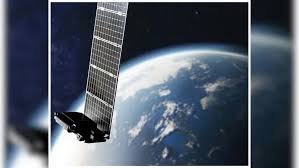Space Docking Experiment (SPADEX):

Hyderabad-based company handed over two 400 kg class satellites to ISRO, which will be part of the Space Docking Experiment planned by the space agency later this year.
- Space Docking Experiment (SPADEX) is one of ISRO’s most significant steps towards developing autonomous docking technology.
- The mission involves two vehicles—‘Chaser’ and the ‘Target’—coming together and connecting in space.
- Docking systems allow two spacecraft to connect in orbit, enabling critical operations like assembling space stations, refueling, or transferring astronauts and cargo.
- It will also test how well the combined spacecraft maintains stability and control after docking, ensuring smooth operations for future missions.
- India’s SPADEX experiment is unique because it focuses on developing indigenous, scalable, and cost-effective docking technology.
- This experiment involves two spacecraft docking autonomously in orbit, demonstrating precision, navigation, and control capabilities critical for future missions.
- SPADEX is designed to serve a wide range of spacecraft sizes and mission objectives, including potential collaborations for building space stations or deep space exploration,”
- The history of docking systems dates back to the Cold War when the Soviet Union achieved the first successful docking in space.




